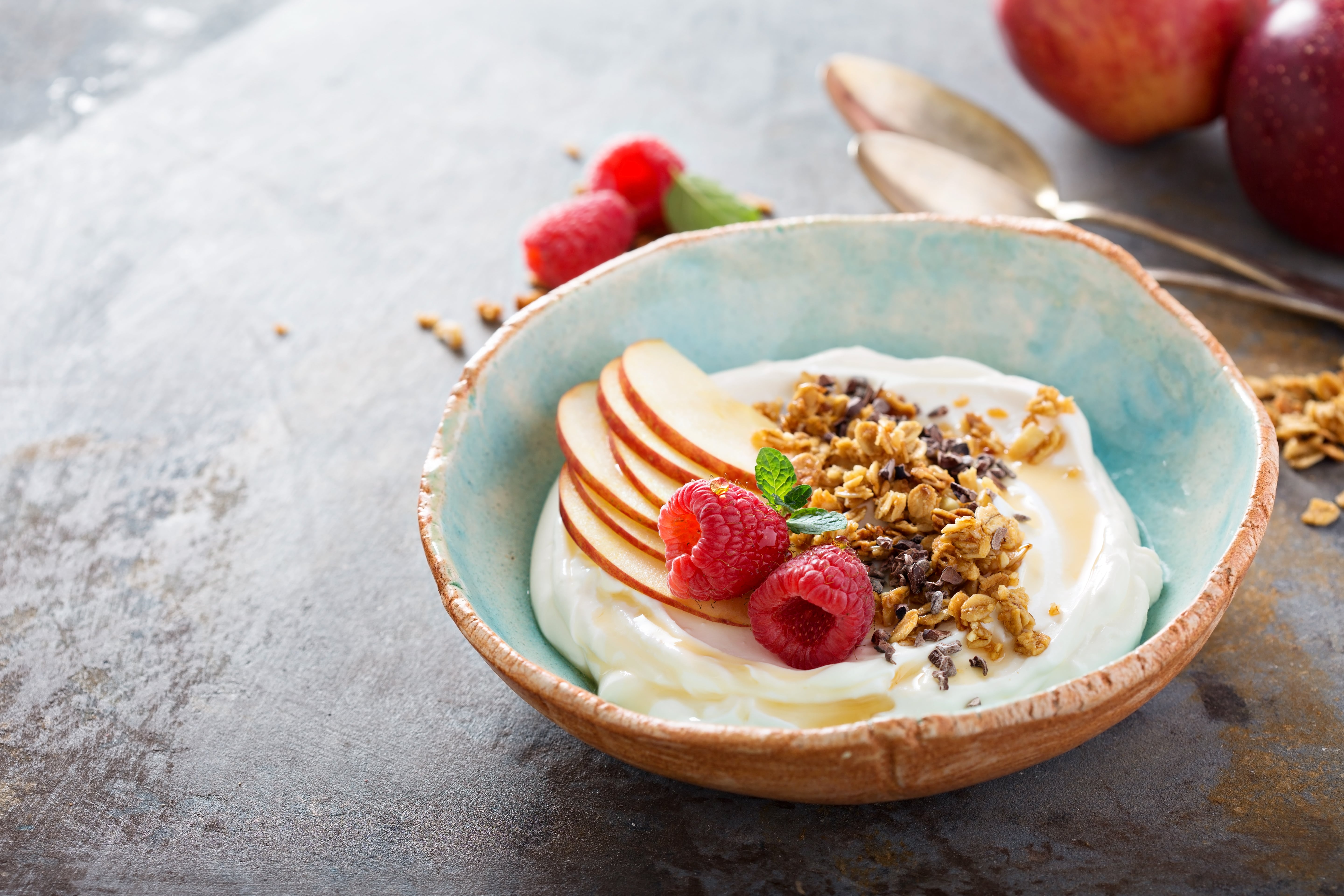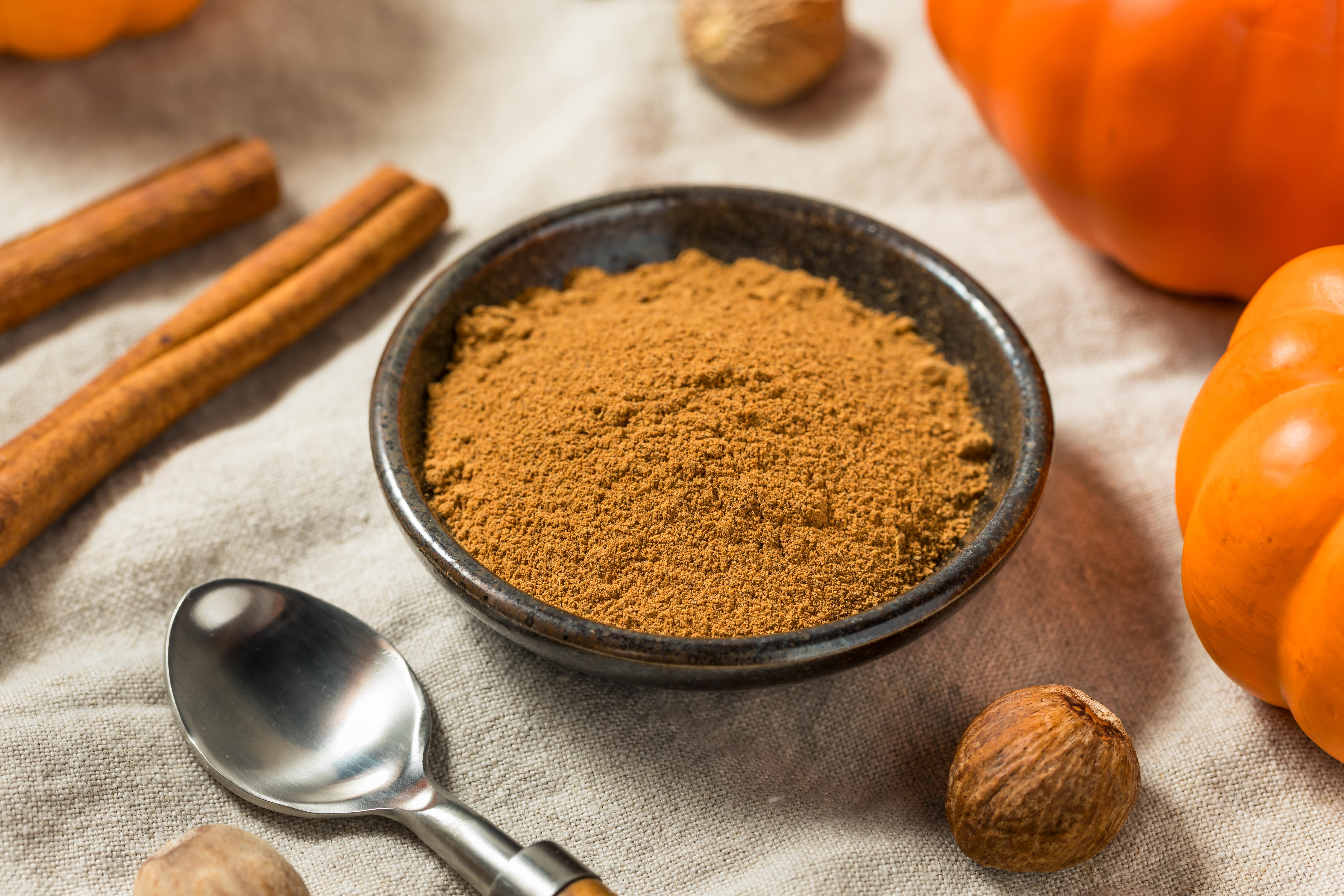Key Takeaways
- Many fall favorites are packed with added sugar and refined carbs that spike glucose and drain energy.
- The spices in pumpkin pie spice (think cinnamon, nutmeg, and ginger) offer antioxidant and anti-inflammatory benefits when used without excess sugar.
- Smart swaps, combined with meal sequencing, can help you enjoy pumpkin spice flavors while maintaining a steady metabolism.
{{mid-cta}}
As soon as the air turns crisp, pumpkin spice flavors take over: from pumpkin spice lattes and donuts to muffins and candles. It’s that cozy time of year when the scent of cinnamon and nutmeg fills the air. But beneath the cozy scent of cinnamon and nutmeg lies a seasonal truth: most fall favorites are more sugar than spice.
A medium pumpkin spice latte (PSL) from a popular coffee chain (think Starbucks) can pack over 50 grams of added sugar, which can cause a quick spike in blood sugar levels and impact weight management. That sugar rush may feel energizing at first, but it’s followed by a crash that can trigger cravings, fatigue, and bloating. Over time, repeated glucose spikes can affect insulin sensitivity, increase the risk for type 2 diabetes, and even influence heart health and overall wellness.
This doesn’t mean you need to skip the PSL altogether; you just need to understand how these ingredients affect your body and know how to enjoy them more mindfully.
The Pumpkin Spice Problem

Pumpkin spice doesn’t actually mean pumpkin. Most seasonal drinks and baked goods use a sweetened syrup or flavored powder that mimics pumpkin pie spice or a spice blend, but delivers little actual nutrition. Meanwhile, real pumpkin puree offers fiber, healthy fats, potassium, and beta-carotene, a powerful antioxidant that supports the immune system, heart health, and may aid in weight loss by enhancing satiety.
Here’s the breakdown:
- Sugar overload: Added sugar quickly raises blood glucose, prompting insulin release to bring levels back down. This spike-and-drop cycle can leave you feeling sluggish and hungry soon after.
- Refined carbs: White flour and sweetened toppings (think donuts, muffins, and bread) can have a similar effect, further taxing your metabolism.
- Fat and sugar combo: Whipped cream and syrups add saturated fat and calories, which can promote fat storage when consumed regularly.
Meanwhile, real pumpkin puree offers fiber, potassium, and beta-carotene, an antioxidant that supports immune and heart health. But those benefits get lost when pumpkin is buried under layers of sugar and cream.
How Fall Flavors Influence Metabolism

Pumpkin spice is more than a flavor; it’s a mix of sensations that influence how your body feels and functions. It’s often a sensory experience, often tied to comfort and nostalgia, but also high carbohydrates and sweetener content that can raise blood sugar and strain your metabolism.
- Sugar + caffeine: Pairing high sugar with caffeine (like in a PSL) can spike glucose, then cause a sharp drop once insulin kicks in. You might feel alert briefly, then experience the inevitable midmorning crash.
- Refined carbs: Many seasonal treats combine sugar with simple carbohydrates, resulting in a rollercoaster effect on blood sugar levels. Over time, this can impact insulin sensitivity and contribute to inflammation.
- Hidden benefits of real spices: The spices in pumpkin pie spice (like ground cinnamon, nutmeg, ginger, allspice, and turmeric) contain antioxidants and compounds with anti-inflammatory properties that may improve heart health, help manage cholesterol and blood pressure, and even aid weight management.1 For example, ground cinnamon has been linked to improved glucose metabolism, and ginger and turmeric provide anti-inflammatory properties.2,3 The challenge is that these benefits only show up when the spices are used in balanced recipes, not sugar-laden desserts.
Ultimately, the fall flavor problem isn’t the spices themselves; it’s what we add to them.
The Metabolic Playbook: Smarter Pumpkin Spice Season

You can still enjoy fall flavors without the metabolic chaos. Try these strategies to balance comfort and health:
1. Swap the Syrup
Order your pumpkin spice latte with fewer pumps of syrup, or opt for a sugar-free or unsweetened version. Better yet, make it at home. Recreate the pumpkin spice flavor at home by blending pumpkin puree, ground cinnamon, nutmeg, and allspice with a touch of maple syrup or a low-calorie sweetener like stevia. You’ll keep the health benefits without the sugar spike.
2. Protein and Fiber First
Start your morning with a protein-rich base before your coffee or treat. A Greek yogurt bowl or a pumpkin smoothie made with chia seeds, protein powder, and unsweetened milk can help balance carbs and maintain steady blood sugar levels while supporting weight management.
3. DIY Pumpkin Fix
Skip the drive-through and make a pumpkin spice smoothie at home for a nourishing blend that supports metabolic health and overall wellness. Combine canned pumpkin, your favorite protein powder, milk (or plant-based milk), and warm spices like cinnamon and allspice. Add olive oil or nut butter for healthy fats, and you’ll feel full longer without risking weight gain. It’s creamy, naturally sweet, and keeps you fueled instead of spiking your blood sugar.
4. Watch the Caffeine-Sugar Combo
When caffeine and added sugar mix, the result can be energy cravings and unstable blood glucose. Try a smaller pumpkin spice latte with unsweetened almond milk to support heart disease and weight management goals.
5. Sequence Your Meal
When you eat protein and fiber before carbohydrates, you help blunt post-meal blood sugar and insulin spikes, important for preventing type 2 diabetes and improving insulin sensitivity. If you plan to enjoy a seasonal donut or PSL, consider having a protein-rich snack, such as a hard-boiled egg or a handful of nuts, first.
6. Track and Adjust with Signos
With Signos, you can see how your glucose responds to your favorite fall treats in real-time, then make simple adjustments. A short walk after your latte, reducing syrup pumps, or adding protein and fiber earlier in the day can all help level out your glucose patterns.
How Signos Helps You Navigate Fall Flavors

Whether you’re testing a Starbucks pumpkin spice latte or experimenting with pumpkin smoothies, Signos helps you monitor your blood sugar levels in real time and see how each choice affects your glucose and overall health. Everyone’s glucose response is different. What sends one person’s levels soaring might barely move the needle for another.
When you spot a glucose spike after a treat, the data helps you adjust your next move:
- Pair your drink with protein.
- Take a 10-minute walk.
- Choose a smaller portion or less syrup next time.
Over time, these patterns create personalized feedback that helps you improve insulin sensitivity, reduce cravings, and support your metabolic health.
The Bottom Line
Pumpkin spice isn’t the problem; it’s the sugar it often comes with. The real health benefits of pumpkin spice come from the real ingredients (pumpkin puree, antioxidant-rich spices, and anti-inflammatory herbs like turmeric and ground cinnamon), not from sugary syrups. With a few adjustments, you can savor the flavors of the season while promoting heart health, supporting weight management, and enhancing metabolic wellness.
Learn More With Signos’ Expert Advice
With Signos, take the guesswork out of snacking and see how different foods and patterns affect your glucose. Use a glucose monitor (CGM) to track how your food choices affect your glucose levels, then create a personalized strategy for smarter, more productive snacking.
Signos’ blog features expert advice and actionable tips to help you enjoy the flavors of the fall season without the glucose swings. Learn more about how Signos can improve health.
Topics discussed in this article:
References
- Mackonochie M, Rodriguez-Mateos A, Mills S, Rolfe V. A Scoping Review of the Clinical Evidence for the Health Benefits of Culinary Doses of Herbs and Spices for the Prevention and Treatment of Metabolic Syndrome. Nutrients. 2023;15(23):4867. Published 2023 Nov 22. doi:10.3390/nu15234867
- Silva ML, Bernardo MA, Singh J, de Mesquita MF. Cinnamon as a Complementary Therapeutic Approach for Dysglycemia and Dyslipidemia Control in Type 2 Diabetes Mellitus and Its Molecular Mechanism of Action: A Review. Nutrients. 2022;14(13):2773. Published 2022 Jul 5. doi:10.3390/nu14132773
- Ajanaku CO, Ademosun OT, Atohengbe PO, et al. Functional bioactive compounds in ginger, turmeric, and garlic. Front Nutr. 2022;9:1012023. Published 2022 Dec 8. doi:10.3389/fnut.2022.1012023




.svg)










.svg)
.svg)
.svg)
.svg)
.svg)
.svg)
.svg)
